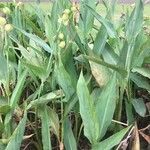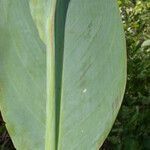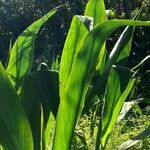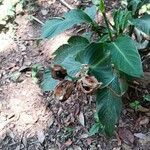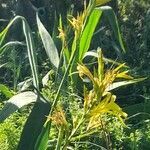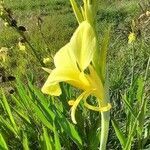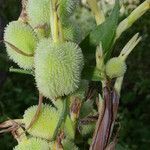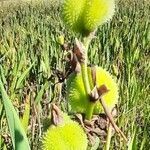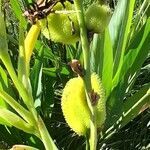Plants 1.5-2.0 m. tall; leaves rather narrowly lanceolate, acuminate, the base gradually and continually narrowed to the sheath, 30-45 cm. long, 8-15 cm. broad, glabrous and conspicuously glaucous; inflorescence racemiform, simple, bearing several pairs of shortly pedicellate or subsessile flowers; sepals oblong-elliptic, about 1 cm. long; corolla 4.0-4.5 cm. long, yellow, the lobes oblong-lanceolate, acuminate, erect or sharply ascending, the tube about equalling the sepals; staminodia 3, obovate-elliptic, 8-9 cm. long, yellow; capsules irregularly ellipsoid, 4-5 cm. long, 2-3 cm. thick, densely spiny-fimbriate.
A herb. It has long slender stems. These grow 1.2-2 m high. It has creeping, slender underground stems or rhizomes. It spreads 30-90 cm wide. The leaves are greyish and sword shaped. They are pointed. They are 45-70 cm long and white along the edges. They are 2-14 cm wide. They clasp the stem at the base. The flowers are yellow. They are in clusters of about 10. The flowers are 8-10 cm long. The fruit are 2-5 cm long and have warty projections over them. They contain many small seeds. They are brown with black marks.
